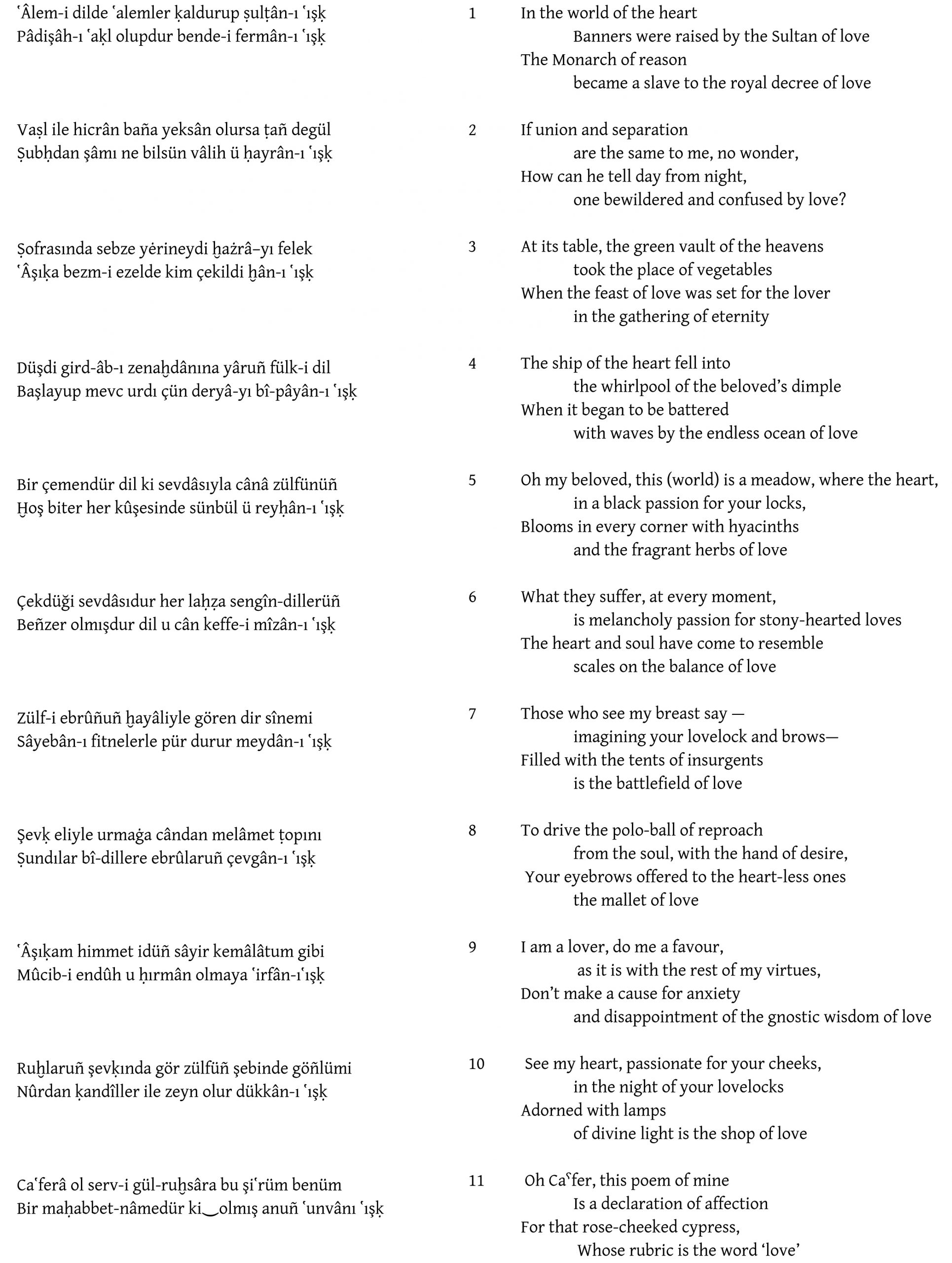Ca‘fer Çelebi
Caʿfer Çelebi (1459-1515)
Tâcîzâde Ca‛fer Çelebi was a renowned scholar and poet. Born to a local notable in Amasya, where Ottoman ‘princes’ (şehzâdes) held court as governors for their training, he was first educated there and then ‘graduated’ to Bursa which was renowned as an Ottoman centre of learning.
He held various posts as a madrasa teacher and as a judge (ḳāḍī). He was involved in the commissioning of various buildings (‘primary’ schools [sibyan mektebi], mosques and caravanserais), and was appointed nişâncı or imperial chancellor under Sultan Bayezid II. He was deposed upon the Sultan‘s death but reappointed when Selim I’ acceded to the throne. Ca‛fer Çelebi was not only amongst the most distinguished ʽulemâ of his period, he also took part in Ottoman campaigns under both sultans. Among his other exploits he accompanied Selim I to the battle of Çaldıran against the Safavids in 1514. He served as army judge (kazasker) of Anatolia but was hanged by order of Selim I in 1515, accused, rightly or wrongly according to different sources, of supporting a Janissary revolt against the immediate renewal of military campaigning.
According to an Ottoman register (iʽnâmât defteri) he was rewarded by Bayezid II for a panegyric qasida and for an official letter to the Mamluk Sultan of Egypt. Besides a substantial dîvân of more than three hundred poems, he produced several works in prose and verse. Notable among them are two mesnevis (mathnawi), one about the conquest of Istanbul (Fetihnâme), which is not without interest as an historical source, the other about the pursuit of love, entitled the Book of Desire (Hevesnâme).
Gazel, from the Book of Desire (Hevesnâme)
Caʽfer Çelebi composed the Hevesnâme around 1494, in the period before he reached the height of his career, while he was a müderris in the Mahmud Çelebi madrasa in Istanbul.
Following the required introductory sub-sections on the unity of God (tevhîd) and the sanctity of the prophet Muhammad (naʽat and münacat) there is a powerful section of self-praise connected to the theme of being in love. There is also a striking section describing the beauty of Istanbul (vasf-ı hıtta-ı ı İslâmbol), which includes the Christian neighborhood of Galata along with the description of a number of new Islamic buildings within the city walls. In one of the sections labelled hasb-i hâl (a literary topos typical of the mesnevi genre comprising a supposedly autobiographical account), he provides a detailed description of a ‘assembly’ (meclis) of poet-friends (dostlar) who find fault with many of their Ottoman predecessors and their works. The mesnevi of Khawsraw and Shirin and the poets Şeyhî and Ahmed Paşa are mentioned in particular. Then the ‘heart’ (dil) advises Caʽfer Çelebi to compose an as yet unheard-of story (kıssa), whereupon a narration begins which makes up the rest of the poem. It tells of the poet’s adventures of falling in love at the sight of an attractive but married woman while having a springtime open-air picnic on the shores of the Golden Horn. The conditions of falling in love and various everyday wonders of nature are narrated alongside with the twists and turns of the travails of the poet and his declamations of love and lust expressed in several gazels which are interspersed in the text. The female beloved is unattainable because she is married, and when in the end Caʽfer is invited to make his peace and accept the impossibility of his pursuit, he dutifully obliges.
The gazel reproduced here is discussed in great detail in Walter Andrew’s chapter ‘Ottoman Poetry: Where the Neoplatonic Dissolves into an Emotional Script for Life’ (FoI 169–87).

For searchable text page – click here
Source
Sungur, N. (ed.) (2006), Tācī- zāde Cafer Çelebi: Heves-nāme (Ankara, Türk Dil Kurumu Yayınları), 255-6; Erünsal, İ.E. (ed. & introduction) (1983), The Life and Works of Tācī- zāde Caʿfer Çelebi, with a Critical Edition of his Dīvān (Istanbul, Edebiyat Fakültesi Basımevi), 287-8. English translation by © Walter Andrews.